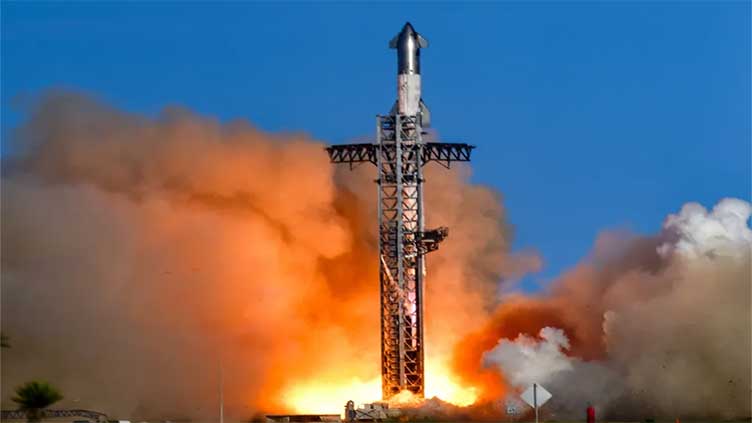Mars rocket set to launch as US rushes to beat China to Red Planet

Technology
SPACEX'S Starship is preparing for its seventh test flight next week
(Web Desk) - If all goes to plan, the launch will occur just three days after the first test flight of New Glenn, the first orbital rocket from Jeff Bezos' space company Blue Origin
SPACEX'S Starship is preparing for its seventh test flight next week, which will see the rocket attempt to deploy fake satellites in space.
It will be the first time the rocket has ejected payloads in orbit.
10 mock satellites that are a similar size and weight to SpaceX's Starlink satellites have been crafted for the mission.
In a recent mission statement, SpaceX added that Super Heavy, the part of the rocket that gets Starship off the ground, will sport reused hardware for the first time.
It will use a Raptor engine from the booster that was launched and returned during Starship’s fifth flight test.
Lift off is scheduled for 13 January in Boca Chica, Texas.
The October mission broke new ground when the booster - instead of falling to the ground - was caught midair in a "chopsticks maneuver" by mechanical arms on the launchpad.
The feat had never been done before, and is expected to be repeated in Flight 7.
Meanwhile, Starship's 165-foot-tall upper stage, known as Starship, will splashdown in the Indian Ocean, as it did on its three most recent launches.
If all goes to plan, the launch will occur just three days after the first test flight of New Glenn, the first orbital rocket from Jeff Bezos' space company Blue Origin.
The 33-engine, nearly 400-foot-tall, rocket is the largest vehicle to have ever left the ground.
SpaceX owner Elon Musk has grand plans to turn Starship into the rocket that makes humans an interplanetary species.
In September, Musk, currently the richest man in the world, claimed the rocket would undergo crewed flights to Mars in as little as four years' time.
Starship has been designed to be the vehicle that makes humans interplanetary, and house up to 100 people.
It is expected to take humans to the Moon through Nasa's Artemis mission in mid-2027, and eventually to Mars.
China has been making increasingly firm announcements regarding its own launch plans for the Red Planet.
In November, a new study suggested China leave for Mars and return to Earth with samples of Martian soil roughly two years ahead of Nasa and the European Space Agency (ESA).



